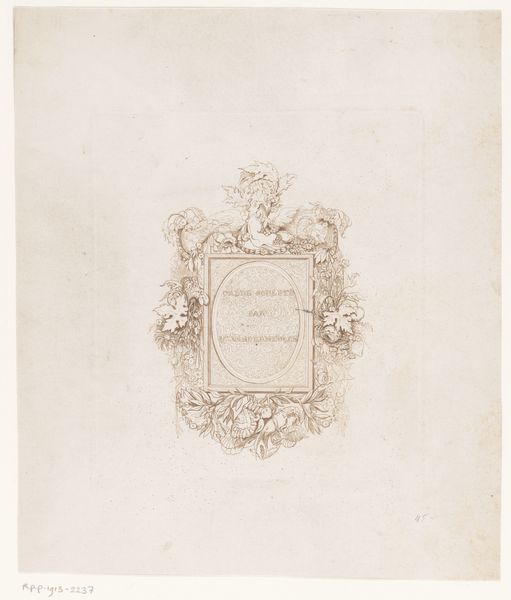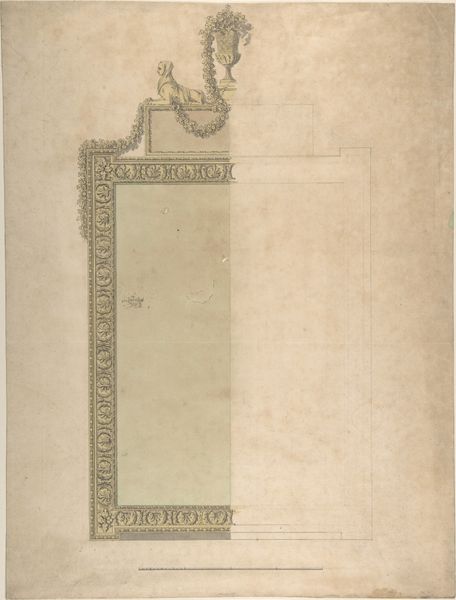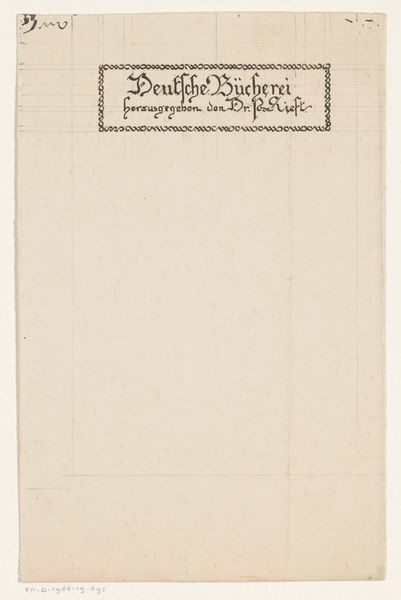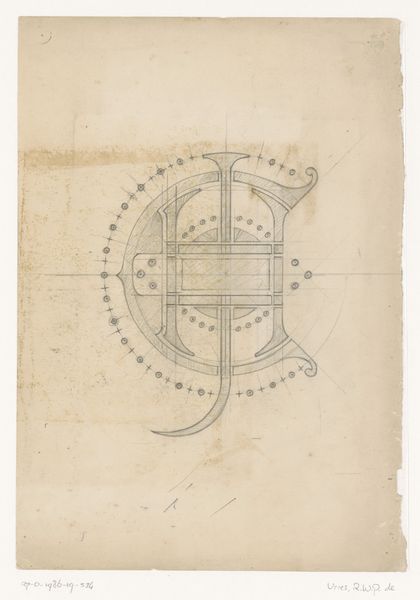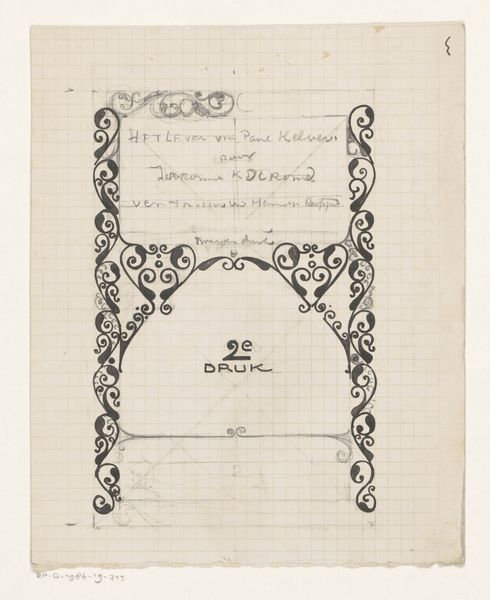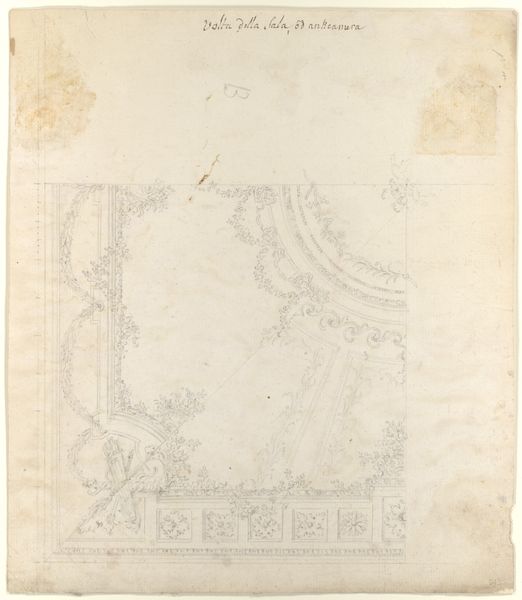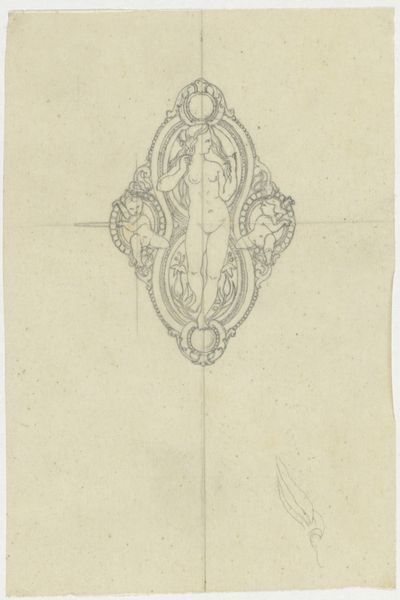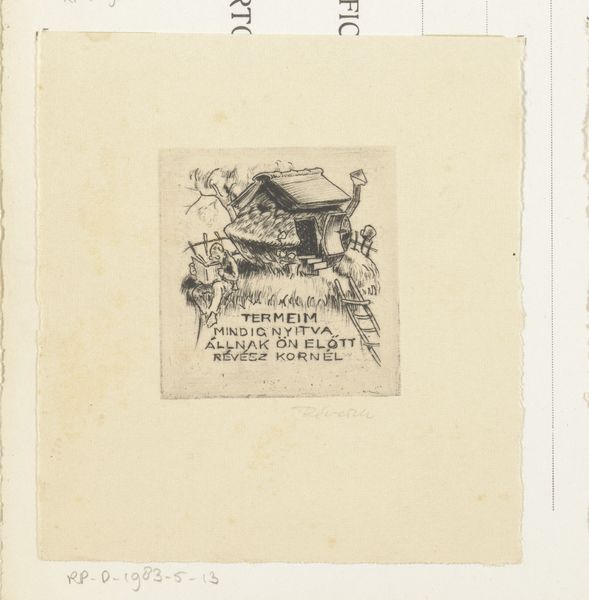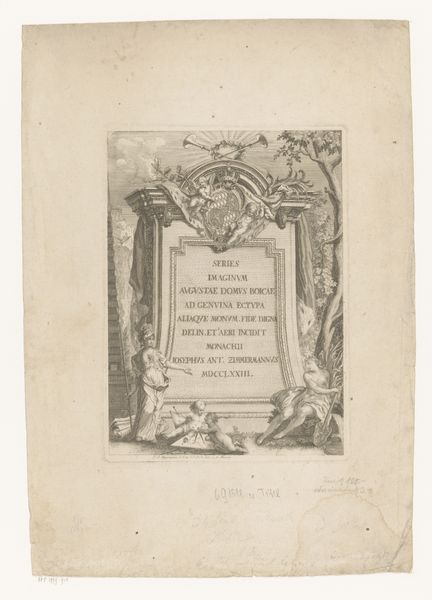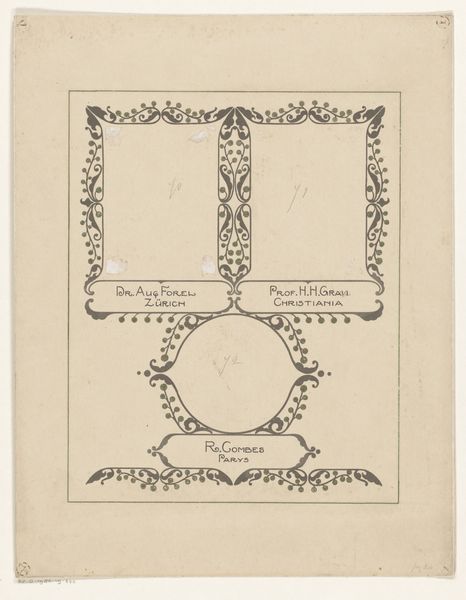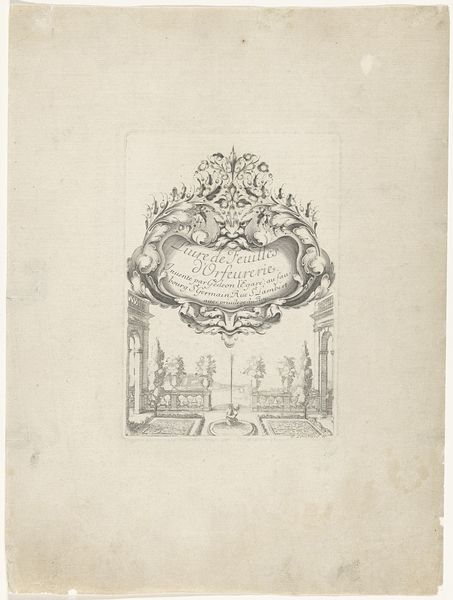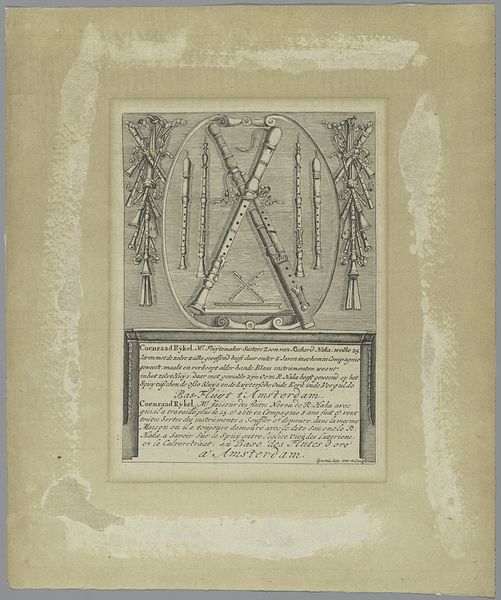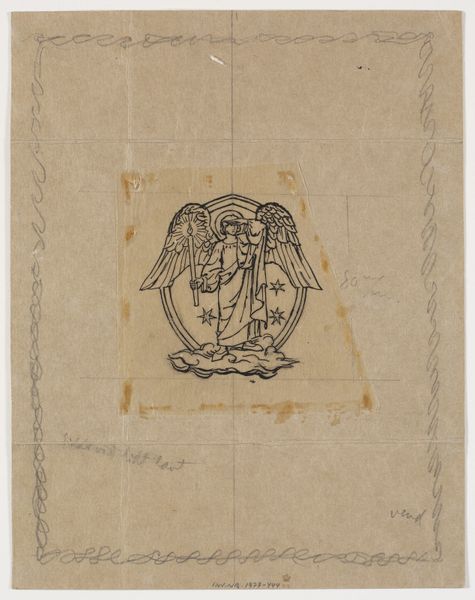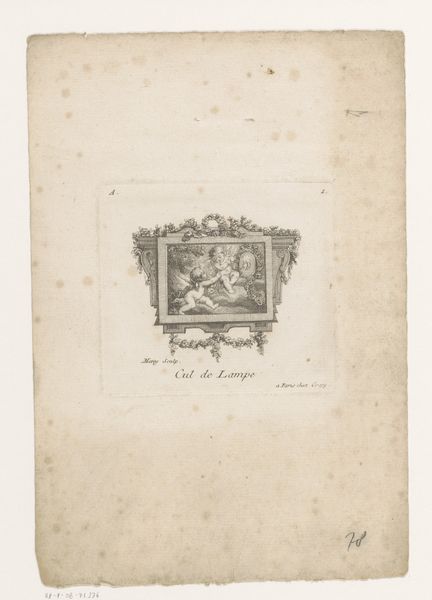
Ontwerp voor een opdrachtblad van een album voor Prof. Hugo de Vries 1918
0:00
0:00
drawing, paper, pencil
#
drawing
#
paper
#
geometric
#
pencil
#
line
#
calligraphy
Dimensions: height 338 mm, width 248 mm
Copyright: Rijks Museum: Open Domain
Curator: This drawing, “Ontwerp voor een opdrachtblad van een album voor Prof. Hugo de Vries,” made in 1918, features pencil lines on paper and reminds me of an early version of architectural plans, a testament to functionalism. I wonder what stories a drawing like this could reveal. What do you think? Editor: It does have that kind of technical drawing feel! I’m curious though— beyond the immediate visual impact, how do you interpret this work within its broader historical context? Curator: The almost sterile design and lettering, the geometric compartmentalisation. In 1918, a mere armistice ended a global war, one where science was placed at the service of nationalist butchery. Don't you think it's impossible to see this piece outside of the sociopolitical context of the aftermath of that conflict? The celebration of scientific achievement may belie something more insidious, such as social stratification. Editor: I hadn't thought about it that way, especially about the clean lines being a response to the war. Is it common for these kinds of scientific dedication pieces to have such specific lettering and border ornamentation? It’s formal, but also trying to be decorative at the same time. Curator: Yes, it speaks to the need to imbue modernity with 'historical weight', giving power structures further solidity through invented traditions. Look closer – the style flirts with older forms of calligraphy yet stays rooted in its own contemporary aesthetics. It's a dance between progress and maintaining established order. Does this additional layer give you a clearer sense of the artist's approach? Editor: Definitely, now it’s not *just* a technical drawing anymore. Curator: Indeed. These lines on paper, viewed through an intersectional lens, invite us to consider the interplay of design, history, power, and progress. Editor: It’s interesting to think about art as always being tied to cultural forces at work, even a seemingly simple piece such as this one. Thanks so much!
Comments
No comments
Be the first to comment and join the conversation on the ultimate creative platform.
